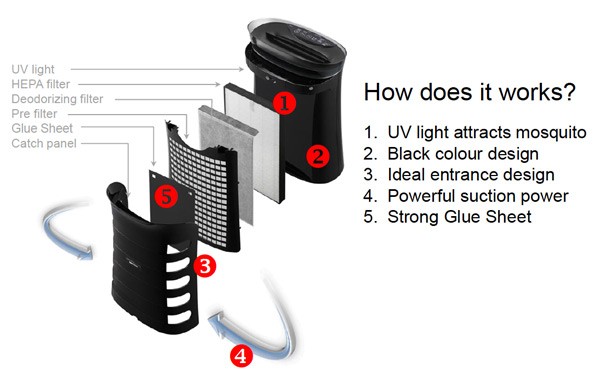



The official A-Z of Cae's FYP page
Points need to be considered when designing a Light according to Museum, D. (2010). How to Design a Light. London: Conran Octopus Ltd.

The book talks about the quality of shadow mostly in cultural context, Japanese and Western. Tanizaki touched on points regarding the beauty of shadow or patina in metal wares. For example, Westerner polishes silver, steel, and nickel tableware to a fine brilliance; whereas for Japanese prefers not to polish them. Japanese enjoys the metal ware when “the luster has worn off and begun to to take on a dark, smoky patina”.
The patina brings out the attractiveness and elegance of age, a “sheen of antiquity”. These sheen of antiquity reminds the past that made them and it creates the surrounding atmosphere peaceful and repose.
I agree with Tanizaki on his point regarding the patina brings out the attractiveness and elegance of the product. Choosing copper as one material can enhance the value of the product itself along the years.
From: Tanizaki, J. (2001). In Praise of Shadows. London: Vintage Books.
Flos Taccia Lamp by Achille Castiglioni, 1958


The ideas of tilting and concave cover came from Taccia table lamp.
some components are assembled using screws, while others by threading / turning.

on-off button shape is inspired by iphone button.

The New Sharp Plasmacluster Air Purifiers with Mosquito Catcher


Instead of having a mosquito trap container, this product uses Glue Sheet to ‘trap’ the mosquitoes sucked in.
Here, it is claimed that UV light attracts mosquito. But according to research I have done previously, UV light is not the primary factor that attracts mosquito. [https://en.wikipedia.org/wiki/Bug_zapper, http://www.control-mosquitoes.com/]
Dark color does attract mosquito “They spot hosts by comparing your silhouette to the horizon. Dark colors stand out, while light shades blend in.” [http://time.com/3311624/why-mosquitoes-bite/]
Ideal entrance design? Does mosquito have the ‘without thought’ or subconscious behavior like human do? I would say it is instinct rather than thought; but does the ideal entrance design work? Maybe.
[http://content.time.com/time/magazine/article/0,9171,934073,00.html, http://news.nationalgeographic.com/2015/07/150714-animal-dog-thinking-feelings-brain-science/]
https://sharp.com.sg/web/products/prodDetail.asp?prodId=638



Further reading:
http://www.dyson.com/air-treatment/cooling-fans.aspx
http://www.thanksmailcarrier.com/2011/07/dyson-technology-experience-and-dyson.html
2. sketches


From the last consultation
Changes made for this one
Reasons for changes NOT made
3. UV light does not attract mosquito
"Mosquitoes are attracted to carbon dioxide and water vapor in the breath of mammals, not ultraviolet light.[6] "
In the case of bug zapper which often uses a fluorescent lamp designed to emit violet and ultraviolet light. These traps are not effective at killing biting insects (female mosquitoes and other insects),[5][6] being much more effective at attracting and killing other harmless and beneficial insects. A study over a summer found that 13,789 insects were killed, of which 31 were biting insects.[6]
the UVC should be used under enclosed environment for safety purpose

4. TiO2 shape
Because the UV light is best not seen, does it matter if the TiO2 shape is changed?
Source:
[6] taken from wikipedia which quoted from: Lewis, Donald (1996-06-14). “Bug Zappers are Harmful, Not Helpful”. Horticulture and Home Pest News (Iowa State University). IC-475 (15). Retrieved 2009-10-22.
http://www.skincancer.org/prevention/uva-and-uvb/understanding-uva-and-uvb
https://www.case.edu/ehs/Training/UV/UVsafety.pdf
https://en.wikipedia.org/wiki/Ultraviolet
http://www.zmescience.com/ecology/insects-light-13012014/
381863 TUV PL-S 5W/2P
1CT
G23 2xT12 2 Pins


http://www.lighting.philips.com/main/prof/lamps/special-lamps/purificationwater-and-air/residential-water-and-air/tuv-pl-s/927900504007_EU/product



Screw Size: #0
Threads Per Inch (tpi): 80
Dimensions in inches
Diameter: 0.060″ 2A Threads
Thread Length: 0.125″ (1/8″) (3.18mm)
Head Height: 0.055″ (1.40mm)
Head Diameter: 0.090″ (2.29mm)
Drive: #0 Phillips
other sources:
http://www.metrication.com/engineering/fastener.html
https://www.boltdepot.com/fastener-information/type-chart.aspx
http://www.brite-lite.com/Pdf/compact.pdf
Opening is still too narrow -> reduce the overall size so the opening is bigger.
Blue light cant be seen
Proportion wise. (wider sphere, conical base)
Tio2 not a disc, make it a tube or smth. Better if it reflects the light outside to attract the mosquito. Can shape the mosquito
The jargon I feel good to know for lighting.
Watt and Lumen
Watt indicates the amount of power a bulb uses to provide light, while lumen is the unit used to measure the light output of a light bulb.
Most people think that the wattage (W) of a bulb tells you how much light it gives. But wattage only tells you how much power a bulb uses. The light output of a bulb is actually measured in lumen (lm). For example, some bulbs, like LED, give the same light output (in lumen) as a classic bulb, but for a much lower wattage. So, to see how bright a bulb is, think in lumen, not watt. The higher the lumen value, the greater the light output. The fact that some bulbs are brighter than others means they are suitable for other purposes.
For example, dimmer bulbs are for bed-side lamp, medium for living room, bright for bathroom.
I see my project lamp to have dim to medium bulbs.
Cap Type
There are different types of caps to fit your light fixture because one size doesn’t fit all.
The cap is the bridge between the bulb and the power-source fitting, providing just the right amount of current to make the bulb glow.
Wide and Focused Light (link)
The shape of a bulb has a big impact on the light effect it delivers. This is because the shape determines the width of the light beam. Standard bulbs can achieve a 360-degree distribution of light. Spots can deliver a focused light distribution at a 25-35-degree beam angle.
Probably, the standard bulbs is better for my project because the cover shape for my design is semi-sphere. By having a 360-degree light distribution, the reflecting properties of the overall lamp will be better.
Switch Cycles
Switch cycles indicate the number of times a bulb can be switched on and off before it fails. The room a bulb is being used in can make a big difference to the light bulb’s lifespan. The room a bulb is being used in can make a big difference to its lifespan. For example, bulbs in a living room often stay on all evening, whereas those in a bathroom may get switched on and off much more regularly. Halogen bulbs typically have a switch cycle of 8,000. Energy savers up to 30,000 and LED bulbs about 50,000.
Color Temperature
Color Temperature is indicated in units called Kelvin and its value determines whether light bulbs produce warm or cold light. Bulbs with a low Kelvin value produce a warm yellow, more cozy light, while those with a higher Kelvin value produce a cool blue, more energizing light.
Around 2700-3000 K will be good.
Color Rendering Index (link)
The sun is the most natural light we have and therefore is the standard of comparison for any other light source. Natural outdoor light has a Color Rendering Index (CRI) of 100 – and therefore is the standard of comparison for any other light source. The higher the CRI (based upon a 0 – 100 scale), the more natural the colors appear.
Run Up Time
For some bulbs it takes longer to reach their maximum light output level. Some bulbs are faster than others – because they have a shorter
‘run- up time’. This is how long it takes for a bulb to reach its maximum light output level. Halogen and LED bulbs have the fastest run-up time – of less than one second – for almost instant illumination. While some energy savers need 5-30 seconds to reach their maximum light output.
Here is a comparison of bulbs that I have taken from the website based on what I would like to have for the light bulbs.
I am looking at LED light bulbs instead of Halogen bulbs as of now.
Source:
http://www.philips.com.sg/
From wikipedia
Most fans used in computers are of the axial-flow type; centrifugal and crossflow fans are sometimes used. Two important functional specifications are the airflow that can be moved, typically stated in cubic feet per minute (CFM), and static pressure. Given in decibels, the sound volume figure can be also very important for home and office computers; larger fans are generally quieter for the same CFM.
Dimensions
The dimensions and mounting holes must suit the equipment that uses the fan. Square-framed fans are usually used, but round frames are also used, often so that a larger fan than the mounting holes would otherwise allow can be used (e.g., a 120 mm fan with holes for the corners of a 90 mm square fan).
The width of square fans and the diameter of round ones are usually stated in millimeters; common sizes include 40 mm, 60 mm, 80 mm, 92 mm, 120 mm and 140 mm (my current design diameter is 160 mm), although 8 mm,[5] 17 mm,[6] 20 mm,[7] 25 mm,[8]30 mm,[9] 35 mm,[10] 38 mm,[11] 45 mm,[12] 50 mm,[13] 70 mm,[14] 250 mm[15] and 360 mm[16] sizes are also available. Heights are typically 10 mm, 25 mm or 38 mm, but this is usually not an important dimension as it does not affect mounting holes or apertures in the case.
Typically, square 120 mm and 140 mm case and power supply fans are used where cooling requirements are demanding, as for computers used to play games, and for quieter operation at lower speeds. 80 mm and 92 mm fans are used in less demanding applications, or where larger fans would not be compatible. Smaller fans are usually used for cooling CPUs, graphics cards, northbridges, etc.
Rotational speed
The speed of rotation (specified in revolutions per minute, RPM) together with the static pressure determine the airflow for a given fan. Where noise is an issue, larger, slower-turning fans are quieter than smaller, faster fans that can move the same airflow. Fan noise has been found to be roughly proportional to the fifth power of fan speed; halving the speed reduces the noise by about 15 dB.[17] Axial fans may rotate at speeds of up to around 19,000 rpm for smaller sizes.[18][19]
Fans may be controlled by sensors and circuits that reduce their speed when temperature is not high, leading to quieter operation, longer life, and lower power consumption than fixed-speed fans. Fan lifetimes are usually quoted under the assumption of running at maximum speed and at a fixed ambient temperature.
Air pressure and flow
A fan with high static pressure is more effective at forcing air through restricted spaces (do I need this too?), such as the gaps between a radiator or heatsink; static pressure is more important than airflow in CFM when choosing a fan for use with a heatsink. The relative importance of static pressure depends on the degree to which the airflow is restricted by geometry; static pressure becomes more important as the spacing between heatsink fins decreases. Static pressure is usually stated in either mm Hg or mm H2O.
Air pressure is most important for cooling. It indicates cooling power per unit area. If the diameter of a fan is constant, then more air pressure indicates more air flow. A simple relation of air flow with air pressure is(fan diameter)2 * (air pressure)2 / (100 * 28.51875) = air flow, where the diameter of the fan is in millimeters, air pressure is in mmH2O, and air flow is in cubic feet per minute.[citation needed]
Additional reading
Common noise reduction methods
I was thinking about using the solar power. Maybe this can be an improvement after settling down the design and everything.
An interesting product http://www.solight-design.com/ which I found.